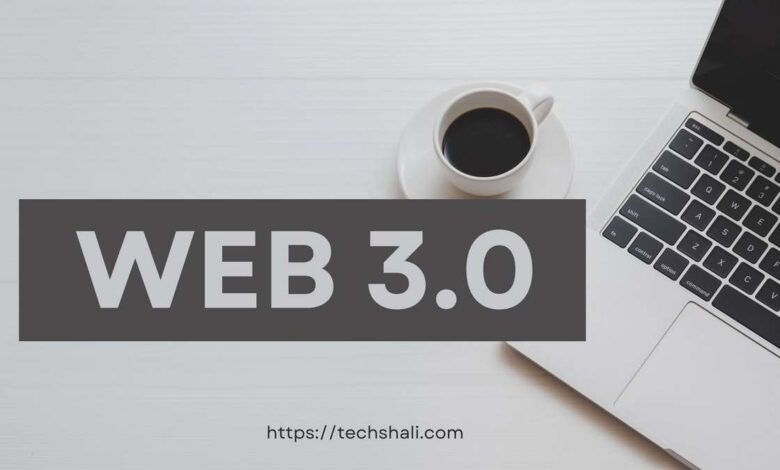What is Web 3.0? Learn All About the Evolution of the Internet

Web 3.0 is already present in society. Every day the advance of technology brings changes in the way people think, act, and live in everyday life. Innovation is the main concept when it comes to the labor market and the industry sector in all aspects.
This new chapter of the digital age comes with the intention of improving the lives of users, not only on the Internet, but in reality, in such a way that any action can be metered, monitored, and also performed online and from anywhere.
But what does Web 3.0 really mean? Is it really important? What are the differences and similarities with Web 1.0 and 2.0? And what does the cryptocurrency financial sector have to do with it?
Continue reading this article and understand details about Web 3.0 and what it has to say about our future. Check it out!
Web 1.0: the early stage of the internet
Before getting into the Web 3.0 concept, it is important to understand what the previous digital eras mean. Starting with Web 1.0, it is nothing more than the milestone for the creation of the World Wide Web (WWW), a document system that gives users access to multimedia content.
Therefore, it was the beginning of the internet and how technology came to improve the life of society. The period was from the late 1980s to the 2000s.
Its main characteristics are the use of static pages, lots of text and little images. As it was the beginning of everything, a lot of things were just created, without thinking so much about the user experience itself, but rather bringing the best that computer technology could do.
Thus, most of the websites at the time belonged to press vehicles, and the internet was more like TV and Radio, since users were passive consumers and could only read information, without interacting. Very different from what it is today, do you agree?

Web 2.0: content generation by users
Web 2.0, on the other hand, is much more modern and known by people, since it started in the 2000s, with the idea of bringing a much more interactive internet.
It was from this that the first conversation and content publishing platforms were started, giving rise to the great famous applications of the early 21st century, such as MSN and UOL Chat, blogs and social networks like Orkut and Badoo.
It can be said that it endures to this day, although there are already signs of Web 3.0 in society. In any case, it was Web 2.0 that brought billions of users into the Internet and marked the monopolization of the World Wide Web.
Among its main characteristics are the use of search engines, social media platforms, and the sharing and interaction of information.
Web 3.0: the internet belonging to the users
This is the trend of the future. Web 3.0 refers to a new era of the Internet, with aspects of being much more decentralized, less dependent on big techs and other companies behind it, and that is able to offer control of information, data, and content to users, making each one consume and share only what they want, having greater relevance to privacy.
It is no coincidence that the update of the Law of the General Law for the Protection of Personal Data on the Internet (LGPD) was introduced, being a major milestone at the beginning of this digital era.
In practice, it is an open-source web, without many or any intermediaries mediating users’ conversations, with electronic money not controlled by the State, and financial services previously only offered by banks. Thus, terms such as metaverse, cryptocurrencies, and user experience are relevant to its operation.
However, it is a model still under construction and not everything is known. It can be said, then, that Web 3.0 is like an improvement and a solution to everything that has been created before and was not successful, it is the use of all existing obstacles or blind spots.
In addition to decentralization, something strong is the use of blockchain that facilitates the transfer of cash value through digital assets and will enable users to actually own them through NFTs (non-fungible tokens), which allows each digital asset to be unique and allows them to be registered in the name of the owner, who will be able to trade their properties in the digital world. This is without the need for authentication and with more privacy.
What are the main differences between these concepts?
Regarding the main differences between the three types of web, we can say that:
- 1.0: focused on reading only; spoke only on behalf of companies; it is the beginning of everything and very immature in general;
- 2.0: already had the reading and writing functions, but no control; focused on the virtual community as a whole; user behavior and application creation begins;
- 3.0: characterized by being portable and more personal; focus on the individual; better use of the internet of things; more intelligent and interactive functions between users.

Importance of Web 3.0 for the future
Its existence in itself already demonstrates great importance, as it represents the next phase of a much more open and interactive technological evolution. Thus, it is demarcated with:
- More speed;
- New architecture;
- Transparency;
- Security;
- Peer-to-peer;
- Privacy;
- Semantic Web.
Therefore, from it there is a more complex interaction between human information and skills with computers, which will be able to understand the desires and profiles of users more consistently.
Relationship between Web 3.0 and cryptoactive
This relationship occurs due to blockchain, an underlying technology that supports digital currencies, i.e., it is like a large shared database that registers users’ transactions.
Among the existing crypto-active currencies we have:
Polkadot (DOT)
It is the basis of Web 3.0, solving the market’s problems regarding the interoperability of platforms.
Basic Attention Token (BAT)
Which aims to remove advertising and users of Brave, the browser used, have the option to join a program to view private ads and earn BAT tokens in return.
Livepeer ([active=LPT])
A decentralized video streaming platform to be an alternative to the tools offered by big tech.
BitTorrent (BTT)
A file-sharing system, which launched the BTT cryptocurrency.
Helium (HNT)
It was created with the mission of facilitating communication between devices and the internet.
Challenges and future of Web 3.0
Even with all the benefits of Web 3.0, as it is not yet deeply known, it still has some challenges, such as: learning, improving user experience, and cultural changes itself.
Another aspect is related to the financial branch and cryptocurrencies. These are issues that are being talked about a lot at the current moment, and you can stay on top of these trends and also learn how to invest through our Postgraduate Course in Investments and Private Banking.